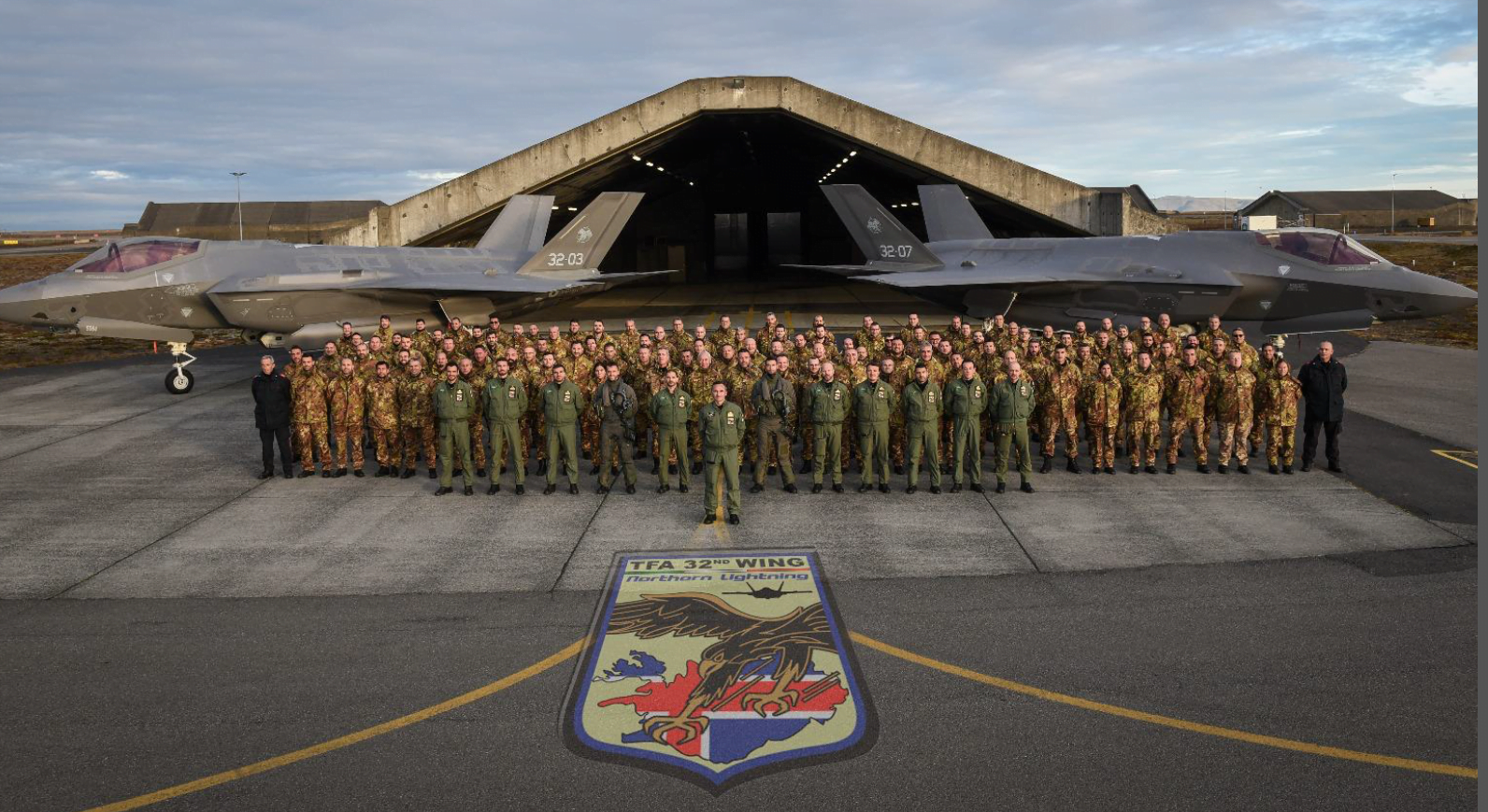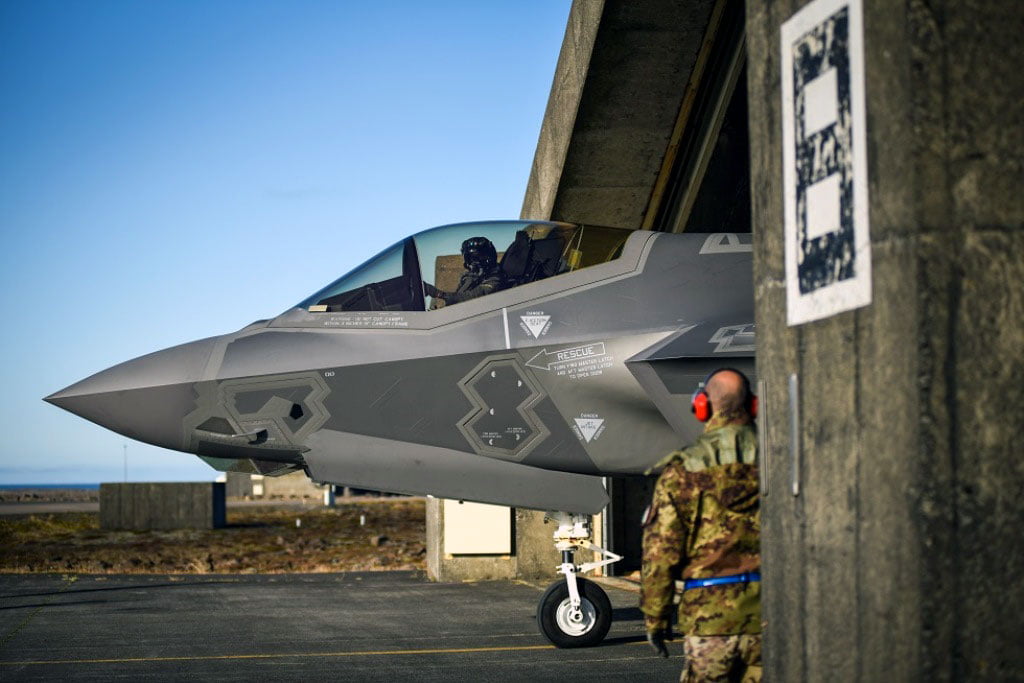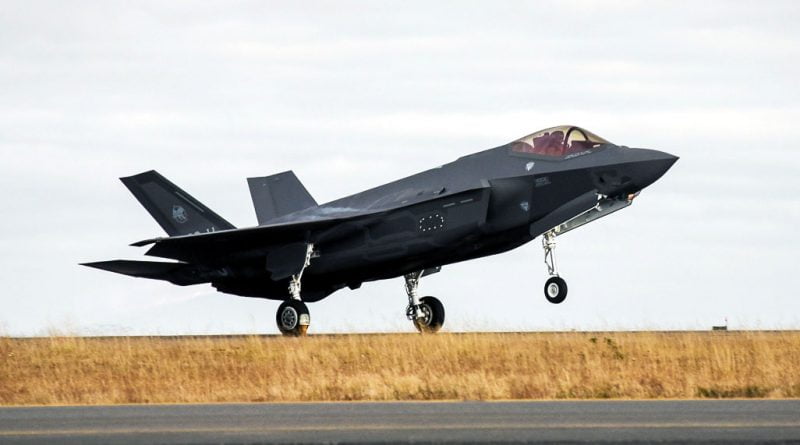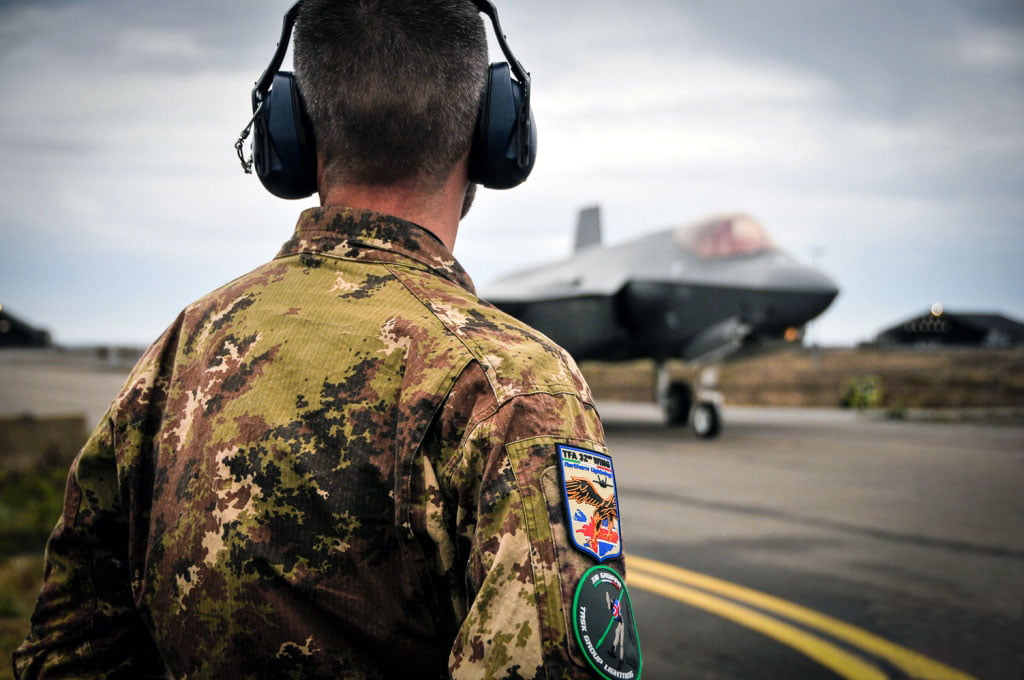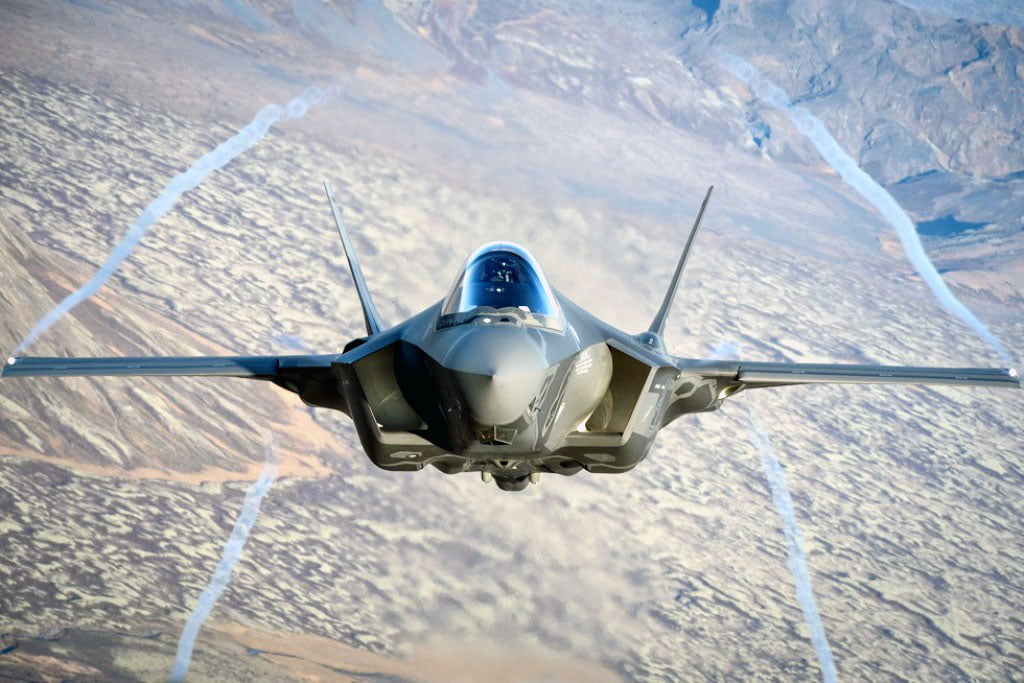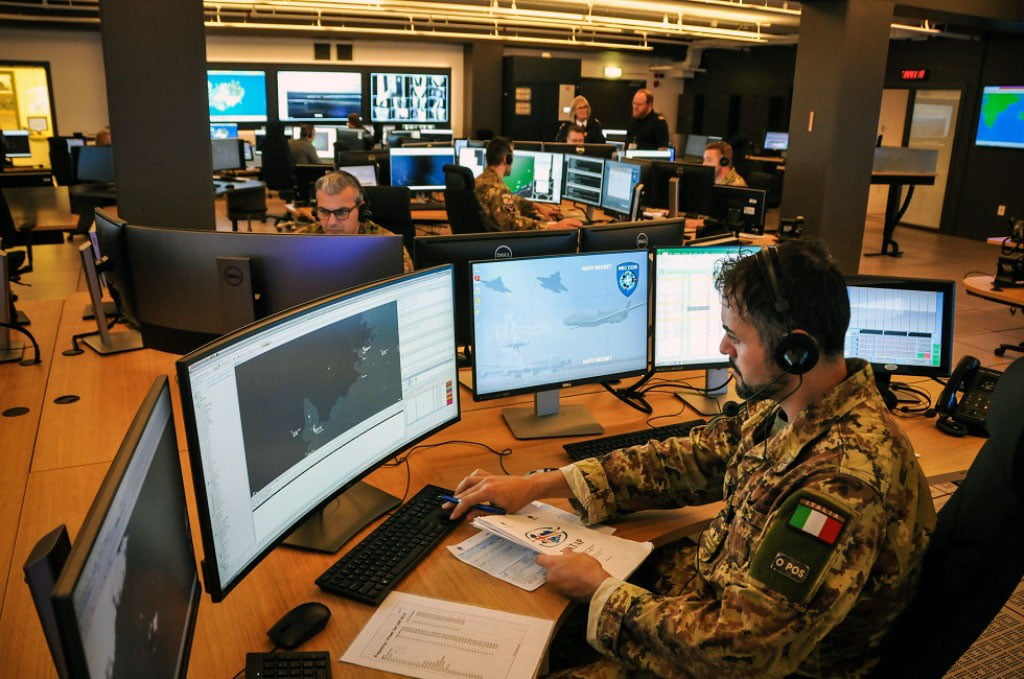By Robbin Laird
The Italians have had a number of firsts with regard to the F-35 global enterprise.
As I wrote in 2015:
At the beginning of the 20th Century, Italy was a pioneer in combat aviation.
Although different at the beginning of the 21st century, Italy has again emerged as an important player in military aviation.
They are key players in the two key 21st century multinational military aviation industrial coalitions, Eurofighter and F-35, as well as establishing a center of excellence for pilot training along with introducing one of the best 21st century trainers, the Aermacchi M-346…..
The Italians like the British are undergoing a double transition, whereby the Eurofighter is being modernized in two ways, namely, subsuming Tornado missions and replacing the Tornado and adding a new AESA radar to the airplane and introducing the F-35 to help shape joint force transformation.
The Italians have built a significant facility at Cameri air base to build the F-35, wings for F-35s and to provide sustainment for the operational fleet throughout the region as well.
The first Italian F-35 left the factory at Cameri in March 2015.
Earlier this Fall, the first F-35 came off of the Cameri line and flew successfully in Italian Air Space.
The facility was built in only four years and the first flight was ahead of schedule.
On Sept. 7, the first F-35A assembled outside the US, made its very first flight from Cameri airbase.
The aircraft, designated AL-1, is the first of eight aircraft currently being assembled at the Final Assembly and Check Out (FACO) facility at Cameri, in northwestern Italy.
During the flight, that lasted about 1,5 hours, the F-35A was escorted by a Eurofighter Typhoon.
As Secretary Wynne, the man who started the talks on building the Italian facility with the Italians put it with regard to the importance of the event:
“This flight makes the F-35 truly an international program.”
Lt. General Preziosa noted “the quality of the aircraft which has come off of the Italian line clearly demonstrates the competence of our industry and the importance of our strategic partnerships with U.S. and global defense industry. The fact that the Dutch Air Force will buy planes from the Italian line is also a recognition of the quality of the Italian effort……
After the first flight of an F-35 built outside of the United States, came the first flight of an Italian pilot of an F-35 at Luke AFB.
On November 5, 2015, Italian pilots flew a USAF F-35A and an Australian F-35A, becoming the first Italian pilots to fly the airplane….
Now the First F-35 built outside of the United States has been officially delivered to the Italian Air Force customer
Next up was another first, the first F-35 flown across the Atlantic.
On Feb. 5, 2016, the Italian Air Force’s first F-35, AL-1 with code “32-01” and markings of the 32 Stormo Wing landed at Naval Air Station Patuxent River, Maryland, at the end of the JSF’s first ever transatlantic flight.
The aircraft was piloted by “Ninja,”an Italian Air Force test pilot, belonging to the Reparto Sperimentale Volo (Test Wing) from Pratica di Mare, and who had successfully completed his initial F-35 flight training at Luke AFB in November 2015.
To put this in perspective, the pilot had only 50 flight hours of F-35 flying experience.
And the Lightning II which Ninja flew across the North Atlantic in winter had only 15 flight hours on before he took off on his historic flight. 32-01was the first plane to came off of the Italian assembly line at Cameri Italy.
And this was done in the middle of winter, flying in and out of cloud layers over the turbulent North Atlantic against 120-knot headwinds. It was remarkable flying.
And then in 2017, the first F-35B ever built outside of the United States rolled out of the factory to a Ministry of Defence sponsored ceremony.
According to a press releases published on May 5, 2017:
The first Short Take-Off/Vertical Landing version of the F-35, or F-35B, assembled outside the United States rolled out of the Final Assembly and Check Out (FACO) facility here today.
The rollout exhibits the ongoing strong partnership between the Italian Ministry of Defense, industry partner Leonardo and Lockheed Martin.
The Italian FACO is owned by the Italian Ministry of Defense and is operated by Leonardo in conjunction with Lockheed Martin with a current workforce of more than 800 skilled personnel engaged in full assembly of the Conventional Take-off/Landing F-35A and F-35B aircraft variants and F-35A wing production.
Gen. Claudio Graziano, Italian chief of defense, Gen. Carlo Magrassi, secretary general of defense/director of National Armament, Adm. Mathias Winter, deputy program executive officer at the F-35 Joint Program Office, Filippo Bagnato, Leonardo Aircraft Division’s Managing Director, and Doug Wilhelm, Lockheed Martin F-35 Program Management vice president, spoke at the milestone event.
“Italy is not only a valued F-35 program partner that has achieved many F-35 program ‘firsts’, but is also a critical NATO air component force, providing advanced airpower for the alliance for the coming decades,” Wilhelm said.
“Italian industry has participated in the design of the F-35 and Italian industry made components fly on every production F-35 built to date.”
BL-1’s first flight is anticipated in late August and it is programmed to be delivered to the Italian Ministry of Defense in November. In addition, two Italian F-35A aircraft will deliver from Cameri this year, the first by July and the second in the fourth quarter.
To date, seven F-35As have been delivered from the Cameri FACO; four of those jets are now based at Luke Air Force Base, Arizona, for international pilot training and three are at Amendola Air Base, near Foggio on the Adriatic coast.
The Aeronautica Militare (Italian Air Force) has already flown more than 100 flight hours in its Amendola-based F-35As.
After a series of confidence flights from Cameri, an Italian pilot will fly their first F-35B jet to Naval Air Station Patuxent River, Maryland, early in 2018 to conduct required Electromagnetic Environmental Effects certification…..
https://sldinfo.com/2017/05/another-italian-first-the-first-f-35b-built-abroad/
The latest Italian first was highlighted at the International Fighter Conference 2019.
Col. Stefano Soreafuco, CO Task Force Air (TFA) 32nd Wing, briefed the participants on the first NATO deployment of F-35s on a NATO mission.
The Air Policing Mission to Iceland was to provide an air defense capability for Iceland.
The F-35 team prepared for the mission by leveraging lessons learned from an earlier Italian deployment, that one done by Italian Eurofighters.
In his briefing Col. Soreafuco highlighted three key operational tasks: Performing cold weather scramble operations; executing an alert recall plan activated by the Icelandic Coast Guard, and executing full integration with the NATO air defense system, including Link 16 real time information sharing and providing digital control for the C2 leadership process.
During the mission 103 sorites were flown, with 14 at night. 159 flight hours were expended in support of these sorites. There were 8-10 planned sorties per day, with six jets available for advanced missions. There were six tango scrambles tasked from the CAOC at UEDEM. And there were two slow mover intercept training missions.
The training mission was highlighted in the slide from his presentation seen below:

The logistics side of the mission went well as they were able to verify the operational capability and sustainability of the F-35s in the mission in terms of cold weather operations.
The logistical support provided to the six jets was facilitated by the supply chain support being transferred to the deployment base.
A key discriminator for the F-35 clearly is its integratability of the F-35 into the C2 process to deal with advanced threats as well which was highlighted in the following slide from his presentation:
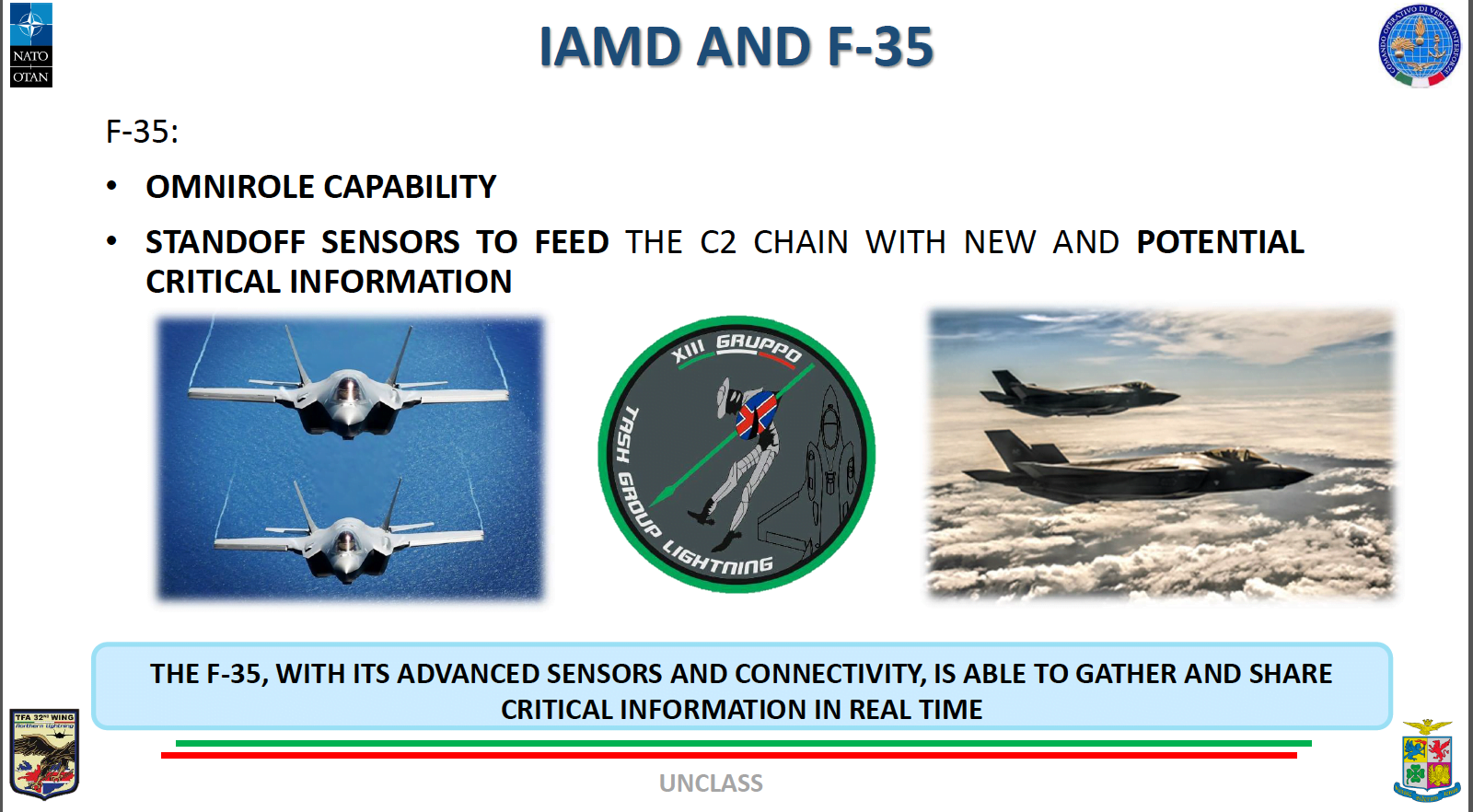
He argued that the F-35 was an “omnirole” weapons system which required no aircraft “customization” for its various roles but due to its integrated capabilities would operate seamlessly across the operational spectrum.
It was able as well to share its core tactical information through its various digital capabilities, including Link 16, MADL and VMF.
As Paolo Valpolini put it in his report on the briefing at the IFC 2019:
Talking of the advantages of the new fighter deployed by the Italian Air Force the TFA32 CO, he underlined the huge advantage of gathering information while delivering effects in different domains, all at the same time, as well as helping legacy assets to convey those effects in a better way.
Another key element was the capacity of the jet to provide valuable and very reliable information and data along the command chain, permitting decision makers to provide the right commands to the effectors according to established Rules of Engagement, all in near real time.
The F-35 showed very good interceptor characteristic, the amount of fuel carried avoiding the need of external fuel tanks.
Coming to connectivity, the Italian detachment exploited considerably the Link 16 capabilities, for connecting with the CR and the CAOS, as well as the Multifunction Advanced Data Link (MADL) that allows direct links among the F-35 community.
As no land assets were available for air-to-ground training, the Variable Message Format (VMF) was not used.
The Iceland operational deployment was based on a build-up approach that saw Italian Air Force Lighting II deployed in Great Britain, Greece, and other European countries for training, bringing the 32nd Wing to become fully start real operations around one year after having received its IOC status.
In short, the Italians delivered on this first NATO mission as they have throughout their record of firsts in the F-35 global enterprise.
The photos in the slide show below are credited to the Italian Air Force.


